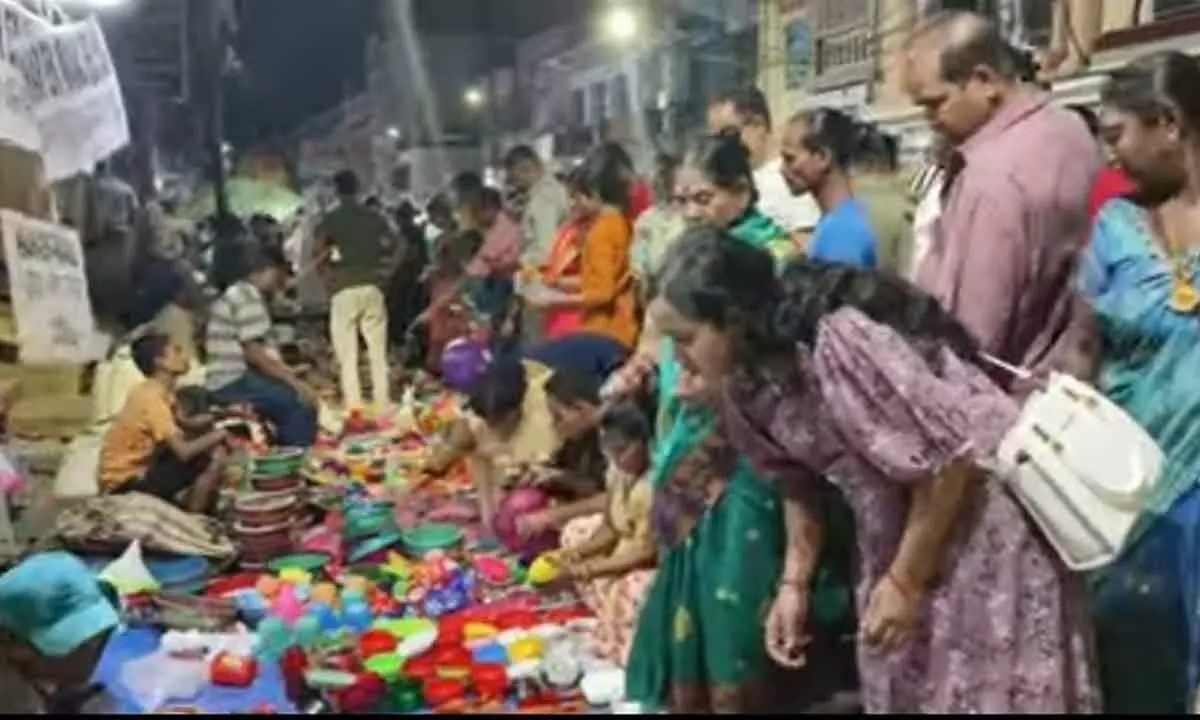‘Kandhei Jatra’ keeps the tradition of clay toys alive

Berhampur: In the age of plastic, unbreakable and sophisticated toys, a 200-year-old practice to sell traditional clay toys still survives in Berhampur in the form of ‘Kandhei Jatra,’ a festival of traditional toys.
‘Kandhei Jatra’ was held on July 3 this year. The traditional ‘Kandhei Jatra’ is held every year on full moon night of Sravana Purnima, a few days after Rath Yatra. The idol of Lord Jagannath at the oldest Jagannath temple at Khaspa Street here gets decorated with toys of mythical characters to convey their importance. The fair continues throughout the night. Though ‘Kandhei Jatra’ aims to sustain clay toys, nowadays toys of other varieties flooded the ‘jatra’ venue. But the traditional clay toys are able to withstand the competition.
The recently formed Kandhei Jatra Committee organises cultural programmes during the ‘jatra’ to keep the celebrations alive throughout the night. The committee does not want to shift the location of this fair although Khaspa Street is quite congested as the fair is related to the old Jagannath temple in the street.
Traditional toy makers from the city, rural areas of Ganjam district as well as from adjoining Andhra Pradesh reach this fair to sell their products. They open makeshift shops on both sides of Khaspa Street. The toy makers, unfazed by lack of patronage to clay toys, chug on to keep the art alive with utmost dedication and perseverance.
The Maharaja of Mahuri encouraged clay toy makers. The interesting part of this ‘jatra’ is that all the 10 temples in Khaspa Street, including Nrusinghanath, Narayan and Jagigosain Chaitanya Math remain open throughout the night. The process of making clay toys is simple. The craftsmen collect clay, cow dung, tamarind seed pewder, ‘khadi’ stone and wheat flour. They make a paste of it. Then they make traditional-style toys with their hands. They dry and colour it with perfection. “We were using natural colours in these toys about three decades ago. But as the rate of the natural colour has increased, we are now using water colours to make these toys attractive”, said a craftsman.
Tripati Nayak, a researcher, said earlier the vendors used to sing aloud in Odia “Nia nia niare bhai, Mahuri raija kandhei ehi, Budha tharu pua, Budhi tharu jhia, sabhinka manaku nie bhandei” (Oh! Brother, take these toys from Mahuri estate. These toys attract people from all the age group from old man to little boy and old woman to little girl).
“The tradition of exchanging sweets among friends and relatives has stopped and it has been replaced with cash payment”, Tripati said.










